 The main hall at the Arts and Culture Center of Hollywood has been transformed into an arboretum of sorts, though the plants and flowers aren’t actually growing. In fact they are all the seedlings of Cristina Lei Rodriguez, whose work most art lovers in Miami should recognize. Since her first solo show back in 2003 at the now defunct Rocket Projects, through her shows at the also shuttered Galerie Perrotin, to Art Basel Miami Beach, to her current local home at Fred Snitzer, Lei Rodriguez’s unique sculptures stand out from the crowd.
The main hall at the Arts and Culture Center of Hollywood has been transformed into an arboretum of sorts, though the plants and flowers aren’t actually growing. In fact they are all the seedlings of Cristina Lei Rodriguez, whose work most art lovers in Miami should recognize. Since her first solo show back in 2003 at the now defunct Rocket Projects, through her shows at the also shuttered Galerie Perrotin, to Art Basel Miami Beach, to her current local home at Fred Snitzer, Lei Rodriguez’s unique sculptures stand out from the crowd.
Now, pieces from those early years up until now, including several that have never been exhibited before, sprout up in this survey called Forever, the first type of exhibit of her work ever. Taking a walk around Lei Rodriguez’s “garden” in Hollywood is also an ultimately Miami experience, as residents will have a gut feel for her hyper-unreal and glittering creations, reflective of the landscape in which we all reside, better than any outsider.
Many of her familiar sculptures will jump out immediately. Those plastic plants that are drooping and dripping in psychedelic colors, made from Dollar Store fake flowers and tsotchkes, from glitter and tinsel. But while obviously fake, these works are not crafted to represent the moment of perfect beauty – the flower in full bloom, the shrub with its pert and stiff leaves. Instead they represent the time when nature starts to fade and decompose, when it starts to return to the swampland that gave birth to it. In fact, nothing real lasts forever, hence a reference to the title of the show.
And yet Lei Rodriguez also plays with the idea that even our hyper-modern world imposed on this sub-tropical peninsula, with its neon and bright pink facades and glass skyscrapers, won’t live forever either. In this harsh climate, with its intense sun and humidity, even the fake can begin to fade.
Although Lei Rodriguez uses ready-made objects and covers them in layers of resin and epoxy, and then paints them in other-wordly colors, she also allows them “to weather,” she explains while walking through the center.
Her sculptures are generally made in color-schemes – some purple, blue, green, some pink and rose, many of them then detailed with gems (fake of course) and other sparkling items. They are incredibly textural works in the end, begging, demanding to know about their process, how they “grew.”
For instance, in one of the pieces hanging on the wall, Forest, Lei Rodriguez has used foam, paint and epoxy. She says she started experimenting with various materials to see how they would react. Tinsel could start to look like dew, shrink wrap like aging skin, “I watch the structure morph, how the shape morphs” she explains about how a sculpture might start out with a certain form and end up in another. The weight of the material might determine that, or the chemical reactions – her creations aren’t all that different from the organic in a sense.
In the exhibit, there are several early works, which are the most literal: some smallish pieces that do look like fake potted plants, with drinking straws thrown in, adorned with wedding-cake figurines (or in this case, little demon-like creatures, in a reference to The Island of Dr. Moreau); very psychedelic in color. As Lei Rodriguez points out, they are intentionally “a little retro, a little childish.” They resemble “personal altars, little landscapes and scenes.”
As her works progress through the years, as can be seen in Forever, they get more abstract, sometimes even monochromatic – and a little creepy. While still working within the thematic that plastic is the sanitized version of nature, a material that will never die, some of her works start to take on a life of their own. In the middle of the gallery, for instance, are several pieces built upon real tree branches – a departure for an artist who usually had made her sculptures entirely from manufactured materials.
These tree sculptures look like creatures crawling out of the black lagoon, the naturalism of their forms highlighting how, try as we might, we can’t really replicate life as it exists and grows, like a real tree branch. One is covered in black chains, with shrink-wrap that looks like pealing and sagging skin, another in silver chains and tinsel. One, called Gnarled, looks exactly like that – a gnarled thing, morphing out of some brackish marsh, from primordial muck. “I have been experimenting more with minimalism and monochromatic works,” Lei Rodriguez explains.
But while the piece Pirate’s Cave is surreal and a bit of a take on treasure items – there are no real jewels embedded in this piece or others – she also says that she wanted to give a nod that art form. Treasures from history, statues, pendants, necklaces, crowns, made of gold and gems, could also be works of real quality, involving master craftsmen and numerous artisans. “I didn’t want to be too conceptual, to put something up that looked like I crumbled a piece of paper and that was it, you know, ‘here’s my treasure!’ I wanted my sculpture to pay some respect to that tradition, to look polished and crafted,” which it does. Like all of her works. They can appear like a mesh and a mess from a distance, but on closer inspection they are detailed, labor-intensive, and not nearly as random as one might first think. On the left when entering the space is a series of clear plexiglass plates that lean against the wall. Lei Rodriguez has manipulated these a bit, there are some fake rhinestones encased in the panels, and the process of dripping epoxy creates image and movement, but they are almost the aesthetic opposite of the densely layered swamp creatures and decaying plant clusters. They were made for her last show at Perrotin, before the gallery decided to call it quits in Miami.
On the accompanying wall hang some purses, a series that was never exhibited publicly before. In another departure for Lei Rodriguez, these are made initially from paper, and are two-tones, black and gold. These are striking, and circle back to the essence of Miami in her work. The bags look deformed, losing their shape in the face of Miami’s withering weather. Purses that hang in closets in New York and Paris don’t decay as quickly as here – nothing does, even when it is made from unnatural material. Our super-materialistic tendencies here, with emphasis on the new and the glamorous and the shiny, may in fact have its roots in that, indeed, we may need to get a new purse, or a new façade, or a fresh coat of paint, as all fades so quickly in Miami.
In front of the transparent panels and the purses sit two “rocks” on pedestals, first seen at the wonderful show The Possibility of an Island in 2008 at MOCA’s Goldman Warehouse satellite space. The rock sculptures, in metallic colors layered and coated with materials and paint, include those tell-tale Lei Rodriguez traits. But the pedestals tell another story. She has started to work “with epoxy when wet,” which gives them a fluid and lacquered look. It drips but also swirls, and seems to pick up sediment as the wet material moves around. The whole sculpture becomes a piece about organic process – the creation of rock, of coral, of mineral invasions. And in its strange way, it is all so beautiful.
Along with Fredric Snitzer Gallery in Miami, Lei Rodriguez now shows with Team Gallery of New York, and she thinks she will bring the rocks for a fall exhibit there. She will also have a solo show at Fredric Snitzer Gallery in October. In New York, she says, “people don’t know my work like here, I need to really decide what I should show as people won’t necessarily know it.” But in Miami, she says, “I can be more experimental; I don’t have to introduce myself,” so she gets to show newer and untried stuff. That’s exciting news. While remaining true to certain themes and techniques, nothing is forever in Forever or her other shows. Like the organic world around, always in the process of growing, maturing, then decaying back into the ground to start the process again, art too can never be static. On the vein, plastic or otherwise, it will die.

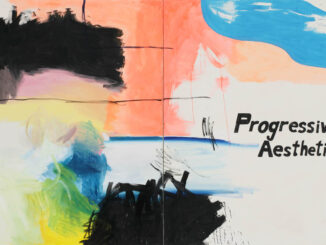
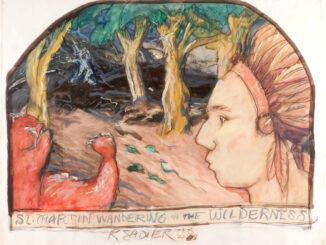
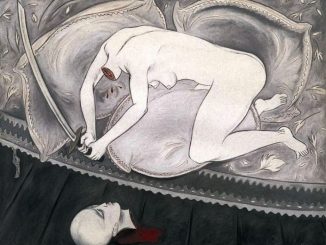
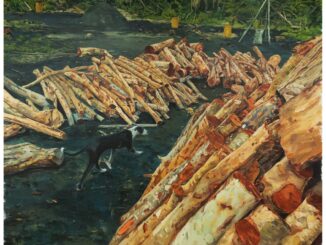
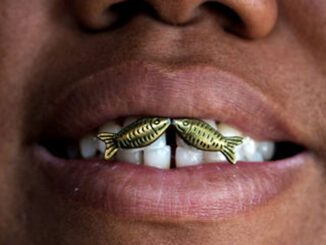
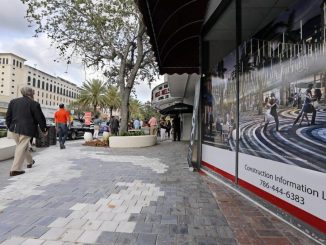
Be the first to comment